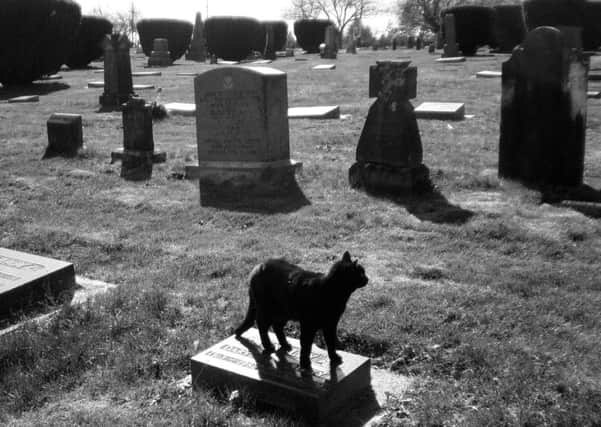The Highland myth of the soul-stealing black cat


Cat Sith is the fairy form of the creature in the storytelling tradition and said to haunt the villages of the north and west. As large as a dog and black in colour with a white spot on its breast, it was a beast largely to be feared.
Many maintain these cats have no connection with the fairies but are instead witches who have the ability to transform into the animal nine times, according to The Gaelic Otherworld by John Gregorson Campbell.
Advertisement
Hide AdAdvertisement
Hide AdCampbell added: “In the Highlands it was not, as in the witchcraft of the sixteenth and seventeenth centuries, looked upon as the familiar or attendant imp of the witch, but merely as an animal whose form witches frequently assumed.”
There were other superstitions connected with the animal in the Highlands. A cat would run much faster than normal if it feared being swallowed by the ground, for example.
If cat is taken on a boat, the vessel had instant protection from drowning by witches.
The animal was disliked by the MacGregors while the Camerons of Glenevis could not tolerate it at all, according to Campbell’s text, which originally dates to 1900.
Other accounts suggest that a cat sith could steal the soul of the dead before the gods could claim it.
Great effort was made to keep the body clear of a cat sith before burial. Coffins would be guarded, games - such as wrestling - would be played to distract the beast.
Fires would be extinguished in the room where the body lay to make it unwelcoming to the supernatural cat.
Advertisement
Hide AdAdvertisement
Hide AdCatnip was also sprinkled through the house to keep the animal entertained ahead to the funeral.
It has been noted that a cat sith could also bring good fortune. If a saucer of milk was left for the animal on Samhain - the Gaelic festival celebrated on October 31 - and taken by the cat, it is said the household would be blessed with good harvests and ample milk for the year.
Tradition notes that cats were also used in one particularly disturbing ritual called Taghairm, or “giving supper to the devil.”
According to Campbell, cats were roasted alive on a spit in a bit to conjure the devil, who was then compelled to grant a wish to those brave enough to perform the ceremony.
Campbell notes of three occasions the ceremony was performed, once in Mull, once in Skye and once in Lochaber by a man called Allan the Cattle Lifter on a piece of land subsequently dubbed Cat’s Field.
